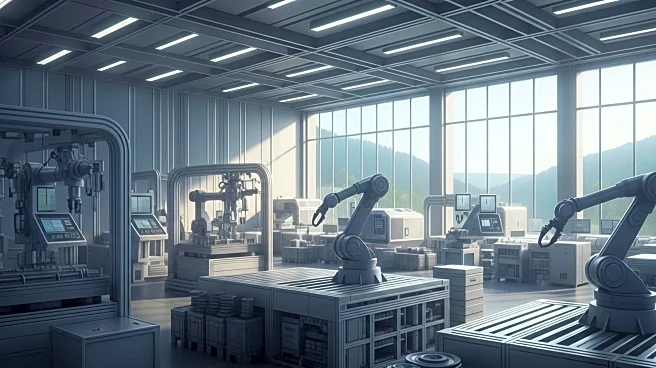What's Happening?
The Institute for Supply Management (ISM) reported that the U.S. Manufacturing Purchasing Managers' Index (PMI) registered 49.1% in September 2025, marking the seventh consecutive month of contraction in the manufacturing sector. This figure represents a slight increase of 0.4 percentage points from August's 48.7%. The report highlights that while production saw growth, new orders and inventories experienced declines, contributing to the overall contraction. The New Orders Index fell to 48.9%, a decrease from August's 51.4%, indicating a return to contraction after a brief period of growth. The Employment Index also remained in contraction territory at 45.3%, despite a slight improvement from the previous month. The Prices Index, although still in expansion, showed a slower rate of increase at 61.9%.
Why It's Important?
The continued contraction in the U.S. manufacturing sector is significant as it reflects ongoing challenges in the industry, including tariff impacts and economic uncertainty. The decline in new orders and employment suggests that manufacturers are cautious about future demand, potentially leading to reduced production and investment. This contraction could have broader implications for the U.S. economy, as manufacturing is a key component of economic growth. The report also highlights the impact of tariffs and geopolitical tensions on supply chains, which could affect pricing and availability of goods. Stakeholders in the manufacturing industry, including policymakers and business leaders, may need to address these challenges to support recovery and growth.
What's Next?
Looking ahead, the manufacturing sector may continue to face headwinds from trade policies and economic uncertainties. The ISM report suggests that improvements in the backlog of orders and production could signal potential stabilization, but sustained growth will likely depend on resolving trade tensions and boosting demand. Manufacturers may need to adapt by diversifying supply chains and managing costs effectively. Policymakers might consider measures to support the sector, such as addressing tariff impacts and fostering a favorable business environment. The next ISM Manufacturing PMI report, scheduled for release in November, will provide further insights into the sector's trajectory.
Beyond the Headlines
The ongoing contraction in manufacturing raises concerns about the long-term competitiveness of the U.S. manufacturing sector. The report underscores the need for strategic investments in technology and workforce development to enhance productivity and resilience. Additionally, the impact of tariffs and trade policies highlights the importance of international cooperation and negotiation to ensure stable and predictable trade relations. As manufacturers navigate these challenges, there may be opportunities to innovate and explore new markets, potentially leading to a more diversified and robust manufacturing landscape.











